How to choose the best Christmas tree, according to science – and why bigger isn’t always better!
December has finally arrived and millions of Britons will be getting their own Christmas tree in the coming days.
Widely considered the festive centerpiece in any home, nothing beats the excitement of seeing a pile of presents under the tree on Christmas morning.
However, deciding on the right size, lights and decorations can cause stress for even the most ardent Christmas fan.
Another big question is whether to choose spruce or fake spruce, especially for people who want to reduce their carbon footprint this year.
To help, MailOnline spoke to experts to find out the perfect Christmas tree, according to science – and why bigger isn't always better.
Experts shared their tips on the perfect Christmas tree, and gave their opinions on the 'real vs fake' debate.
Real or fake?
Deciding whether to use a real tree or an artificial tree is usually the first step – generally, a real tree is best.
Artificial Christmas trees are not recyclable because they are made from a mixture of materials that cannot be separated, so when they are disposed of they end up in a landfill.
What's more, they're essentially made of plastic and have more greenhouse gas emissions over their lifetime than the real thing, which already absorbs carbon.
According to Professor Ian Rotherham, an ecologist at Sheffield Hallam University, artificial trees can have particularly large carbon footprints if they are imported from abroad and used only once.
“Over maybe ten years, the impact is minimal,” he told MailOnline.
“But if they are manufactured abroad, for example in China, and transported to Britain, the direct carbon footprint is significant.”
Although artificial Christmas trees can of course be reused, real Christmas trees can also be reused if they are taken to the park or returned to suppliers.
Some services collect used Christmas trees in the new year to replant before reusing them the following Christmas, in an attempt to tackle waste.
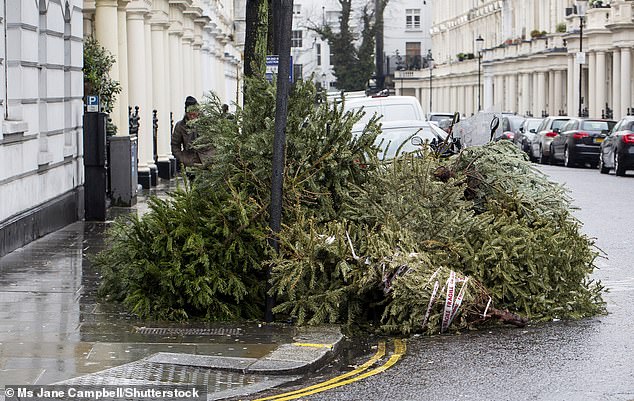
More than eight million Christmas trees are disposed of every year in the UK, many of which are thrown away or left in the streets in the days after New Year.
Professor Rotherham said the carbon footprint of a real tree depends a lot on what you do with it after Christmas.
He told MailOnline: 'Buy a real tree in a pot and use it over a number of years and then plant it outside for it to grow on.'
“This way you can eliminate a little bit of your carbon footprint from other Christmas celebrations.”
All I want is a first Christmas
Christmas tree sellers sell a variety of fir trees, but only one comes out on top.
Nordmann trees (Abies nordmanniana) are the most popular choice, said Veronica Cusack, director of London-based tree planting company Pines & Needles.
It is native to the mountainous regions south and east of the Black Sea in countries such as Georgia and Turkey, but is grown commercially in the United Kingdom as a long-lived Christmas tree.
“Its soft-touch needles that don't droop make them a great choice for homes with children or pets,” Ms Cusack told MailOnline.
“With proper tree care, there is no reason for you to have to grab a hovercraft and remove fallen needles at all throughout the holiday season.”
Other good choices are the noble spruce, known for the blue-gray color of its leaves, and the Fraser spruce, which also has excellent needle-retaining ability.
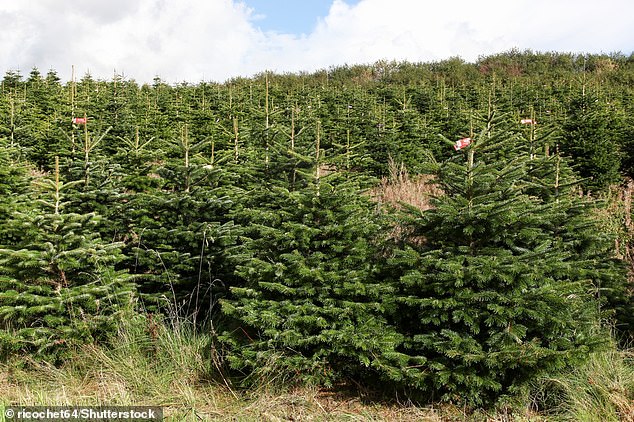
The Nordmann fir (Abies nordmanniana) is native to the mountainous regions south and east of the Black Sea in countries such as Georgia and Turkey.
Although people like to buy their Christmas tree as soon as December arrives – or in many cases much earlier – the second week of December is optimal.
'If you are opting for the original article, we recommend not putting up your tree too early,' Ms Cusack told MailOnline.
“The second week of December is the time to make sure your tree looks amazing all season long.”
Bigger isn't always better
In terms of height, six feet is the most popular option as it tends to fit well in the majority of homes, although a lot depends on how much space you have.
It is worth keeping in mind that the taller a tree is, the farther away its branches will appear once loosened which could pose a striking risk, so bigger is not always better.
'Make sure you have plenty of space to allow your branches to settle into their final location,' Ms Cusack told MailOnline.
“As long as your tree is properly cared for, size should not affect its longevity.”
Some tree vendors offer a stand that can be filled with water, which helps extend its life throughout the holiday season.
“Your tree can drink up to 2-3 pints (1-2 litres) of water a day, depending on its size and your central heating settings, so it needs to keep it topped up,” Ms Cusack said.
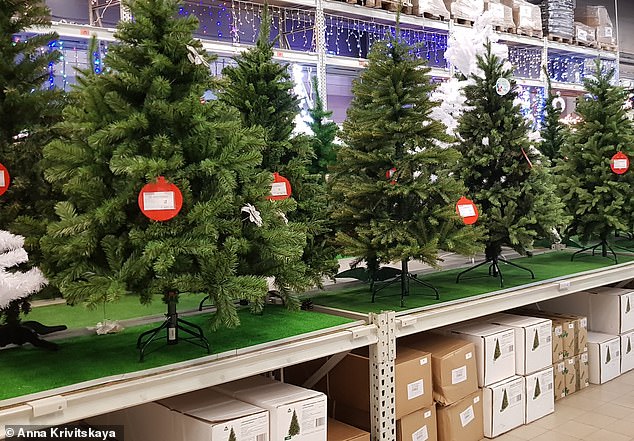
Artificial Christmas trees (pictured) are not recyclable because they are made from a mixture of materials that cannot be separated, including plastic and metal.
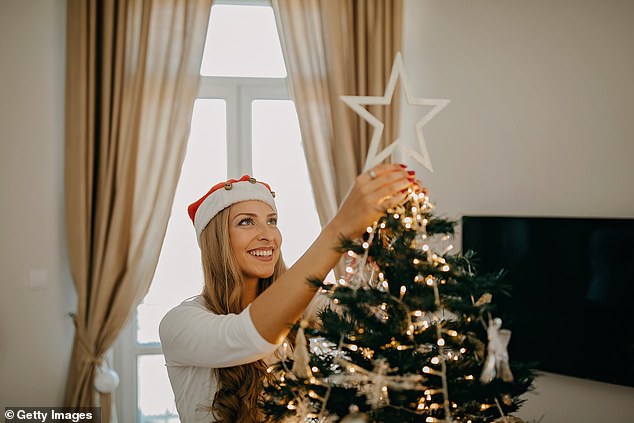
Although people like to buy their Christmas tree as soon as December arrives, the second week of December is optimal, an expert told MailOnline (File image)
However, a lot depends on how the tree grows, so you may not need one (but if in doubt, ask the seller).
Professor Rotherham said: “The trees are now treated to reduce moisture loss and needle drop – so this extends the life of the ‘work’ and reduces differences between different species.”
Honey, it's warm inside
What can affect the longevity of a tree is exactly where you place it in the house.
Once you're inside, you'll need a place well away from any extreme temperatures such as a radiator or air conditioner.
'Trees prefer stable conditions, so it's best to avoid any sudden changes in temperature,' Ms Cusack told MailOnline.
“Make sure to place your tree away from any direct heat sources such as radiators or stoves.
“Heat, air conditioning, and dehumidifiers dry out your tree faster, so the further you stay away from potentially harmful heat sources the better, and the fresher your tree will stay.”
Placing the tree in front of a window may be ideal if you want to show off your tree to your neighbors, but this is not necessary, as fir trees do not need sunlight.
Professor Rotherham said: “Light is generally not the problem, but excess heat is, so it is best to keep the tree relatively cool.”
Do you dream of a green Christmas?
The final step is to decorate your tree, and it is always better to purchase eco-friendly paper or wooden ornaments rather than plastic ones.
Any type of plastic accessory is harmful to the environment once it is disposed of.
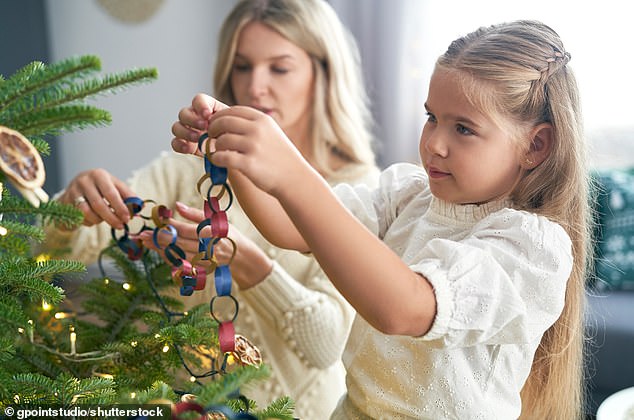
Homemade paper or wooden Christmas tree ornaments can reduce your home's carbon footprint
Plastic waste takes years to decompose in landfills and can pollute the environment or end up entering waterways and oceans.
Another eco-friendly option is LED lights, which use up to 80 percent less energy than incandescent bulbs and last longer, too.
“Choosing paper, wood or even foraged greenery is a great way to keep your carbon footprint to a minimum,” Ms Kosak said.
“It's also a good way to get the kids involved in decorating with some fun festive crafts.”
When it's all over for another year…
Once the celebrations are over, reuse the decorations for next Christmas – and if you can't repot the spruce, contact your council to have them recycled.
Just make sure you don't burn it or send it to a landfill.
Professor Rotherham said: “If the tree used as woodchips is recycled, all of this material will eventually be returned to the soil and only a small proportion will return to the atmosphere immediately.”
“If you burn the old tree, carbon dioxide and other pollutants will immediately spread into the air.”
(Tags for translation)dailymail
